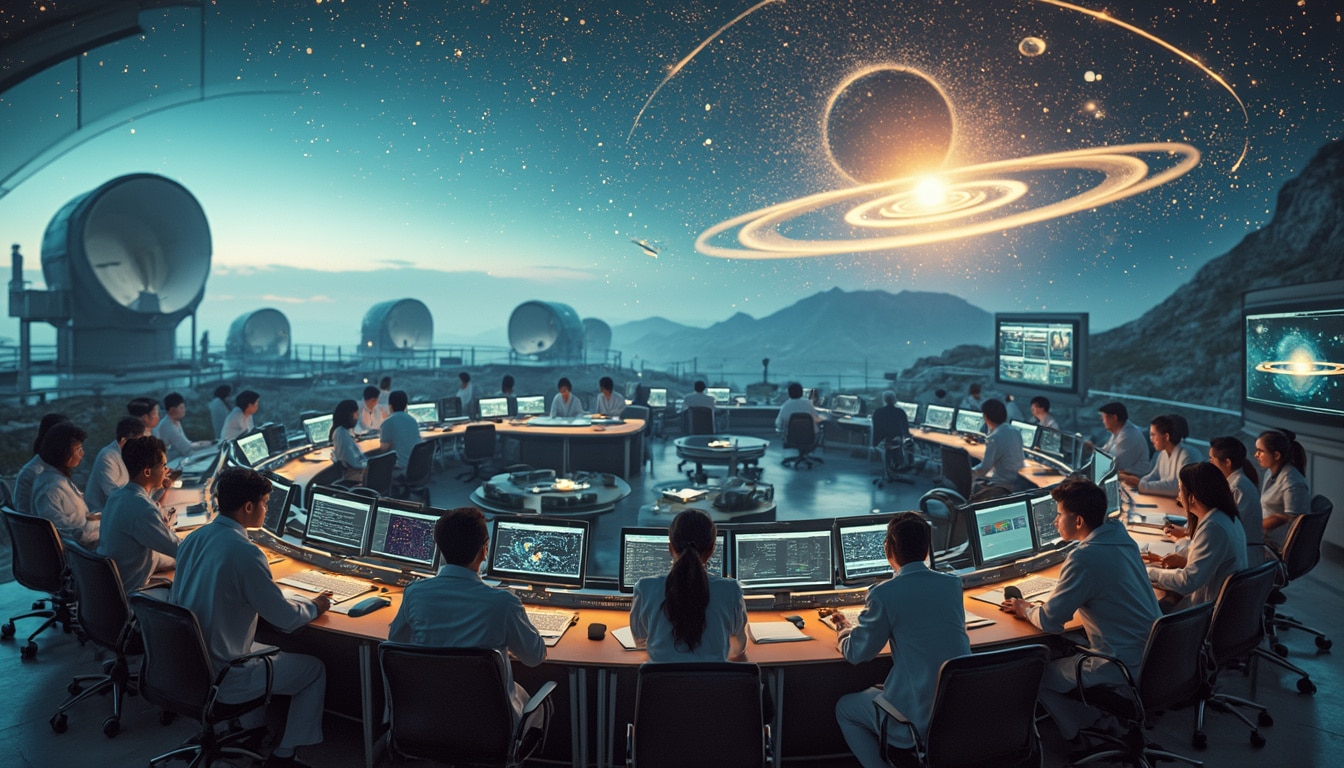The cosmos continues to remind us of its unforgiving nature. Recently, scientists and space enthusiasts alike have been buzzing about the imminent approach of a colossal asteroid, designated as 2025 HY2. This behemoth, comparable in size to a Boeing aircraft, is set to make a close encounter with Earth at an alarming speed of 48,900 km/h (about 30,389 miles per hour). Such events challenge our understanding of celestial bodies that brush past our planet’s sphere of influence. With an approach distance of just 6.8 million kilometers (4.2 million miles), one might wonder how close is too close when discussing cosmic entities. Excitement and anxiety swirl around as we delve deeper into the implications of asteroid 2025 HY2.
Earth finds itself under a constant threat from the unknowns of space, particularly from near-Earth asteroids. As mankind pushes further into space studies and exploration, the apprehensions of a potential impact event grow more pressing. The astronomical community, spearheaded by agencies like NASA, is working diligently to enhance detection systems and devise robust planetary defense mechanisms. In this piece, we shall explore the various dimensions of this asteroid, including its characteristics, the potential risks it poses, and the global efforts aimed at monitoring such space rocks to protect our planet.
Asteroid 2025 HY2: The Facts and Figures
At a diameter of approximately 37 meters (about 120 feet), asteroid 2025 HY2 is notably classified as an Apollo-class asteroid. These specific types of asteroids possess orbits that not only revolve around the sun but also cross Earth’s orbit, making them a significant focus for those monitoring celestial threats. Contrary to larger asteroids that might instigate widespread panic, such as those exceeding 140 meters, 2025 HY2 is still substantial enough that its potential impact could result in considerable devastation.

Close Encounter on May 7, 2025
The anticipated passing of asteroid 2025 HY2 is scheduled for May 7, 2025, at precisely 12:49 PM IST (07:19 UTC). While the asteroid will approach at an impressive velocity, the considerable distance ensures that we are not in immediate danger. Nevertheless, the event underscores the fine line that separates safety from catastrophe.
This asteroid’s flyby prompts critical inquisitions regarding unidentified threats looming over our planet. The fear remains potent that, in the shadowy recesses of space, there could reside numerous other asteroids yet to be discovered, and some could be on a collision course with Earth without any forewarning. It’s essential to grasp that even though we are safe from 2025 HY2, the perception of safety can shift drastically if unmonitored asteroids enter our zone.
Understanding Apollo-Class Asteroids
Asteroids can broadly be categorized into several classes based on their extensive orbits and configurations. The Apollo-class asteroids—like 2025 HY2—are defined by their orbits that intercept Earth’s trajectory. Monitoring these bodies is critical, and organizations like NASA work continuously to refine predictive models for understanding their movements.
Each asteroid is subjected to precise tracking using the latest technology, with NASA and other space agencies like the European Space Agency (ESA) at the forefront. They utilize a network of observatories along with both professional and amateur astronomers globally, gathering and analyzing data to estimate the orbit trajectories of these cosmic wanderers.
The Mechanics of Tracking Near-Earth Objects (NEOs)
Through collaborative efforts, scientists can offer predictions and warn about potential collisions long before they occur. The Center for Near-Earth Object Studies (CNEOS) and the Minor Planet Center compile information vital for predicting the paths of these celestial phenomena. However, despite advancements in technology, the majority of small- to medium-sized asteroids remain undiscovered until they approach Earth.
The Potential Impacts of an Asteroid Strike
Though asteroid 2025 HY2 poses no imminent threat, discussions around the potential effects of its strike are intriguing. The Chelyabinsk meteor, which detonated over Russia in 2013, was only about 18 meters in diameter. The resulting shockwave from that far smaller meteor caused injuries and damage to more than 1,500 individuals and thousands of structures. Imagining the consequences of a strike from a larger object such as 2025 HY2 ignites concern; the fallout could obliterate several city blocks, inducing widespread panic, fires, earthquakes, and a grave loss of life.

Risks of Undiscovered Asteroids
The reality remains that there exist numerous undiscovered asteroids within our solar system that could endanger life on Earth. The stark truth reminds scientists that effective early warning systems, planetary defense missions, and research into technologies for asteroid deflection are essential. NASA’s DART mission, for instance, represents a proactive step in demonstrating we can nudge celestial objects off their courses if necessary.
This brings to light an important discussion about budget allocations in the aerospace sector. Institutions like SpaceX, Northrop Grumman, and others, play a crucial role in enhancing our preparedness in the face of potential threats from space. Their involvement extends beyond corporate interests, facilitating collaborative efforts in asteroid research initiatives that can make or break our defenses against future impacts.
Global Collaborative Efforts in Space Observation
The spirit of international cooperation thrives in the realm of space research and monitoring. With global observatories working harmoniously, efforts against potential asteroid impacts forge pathways to comprehensive safety. This collaborative approach allows for enhanced detection measures to safeguard our planet and possibly mitigate the risks posed by unidentified threats from beyond.

Expanding Monitoring Technologies and Techniques
Continuous advancements in technology not only sharpen our surveillance capabilities but also empower next-generation tools designed to improve our understanding of celestial dynamics. Space missions by various agencies often assess asteroids to extract vital data that can inform asteroid mining ventures and other deep-space explorations. Companies modernizing access to space travel, such as Blue Origin, Rocket Lab, and Virgin Galactic, showcase the innovation that will ultimately help humanity prepare for cosmic challenges.
Yet, the benefits do not end there. Research on the materials composition of asteroids could potentially yield resources critical for sustaining human life in space. Such endeavors pique the interest of not just scientific communities but also entrepreneurial companies like the Asteroid Mining Corporation and Planetary Resources, eyeing commercial opportunities while pushing the boundaries of our exploratory endeavors.
The Future: Protecting Earth from Cosmic Threats
The approach of asteroid 2025 HY2 gifts Earth’s inhabitants a moment to reflect on the delicate balance our planet maintains within the vast universe. While immediate danger seems averted, the reality of space hazards is ingrained in the fabric of our existence. The ongoing commitment from agencies like NASA and collaborative efforts from global partners drive planetary defense initiatives, generating hope in the face of unknown dangers.
A Reminder of Our Fragile Existence
The frequency of near-Earth encounters flaunts a sobering fact that we must remain vigilant. As scientists strive to predict the unpredictable, we become partners in safeguarding the story of humanity. Advances in technology and continued exploration dictate the pace of our response to such celestial phenomena, solidifying the ongoing dialogue around our planetary defense strategies.
Inevitably, asteroid 2025 HY2 serves not just as a passing cosmic curiosity but as an urgent call to action. Communities across the globe must unite—scientists, engineers, policy-makers, and citizens alike—to ensure that we remain ever prepared for challenges that lie ahead. The survival of our planet might very well depend on it.




Leave a Reply